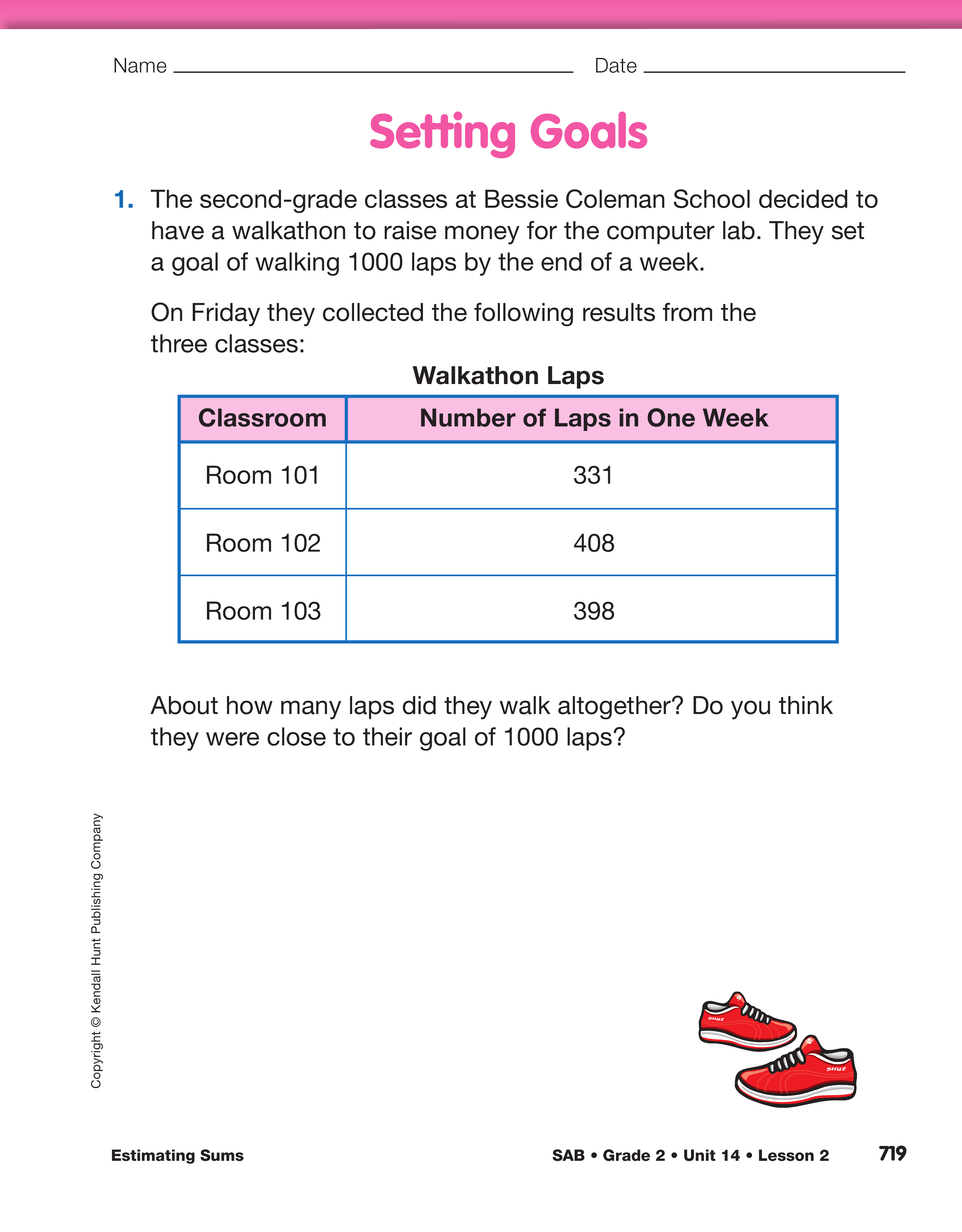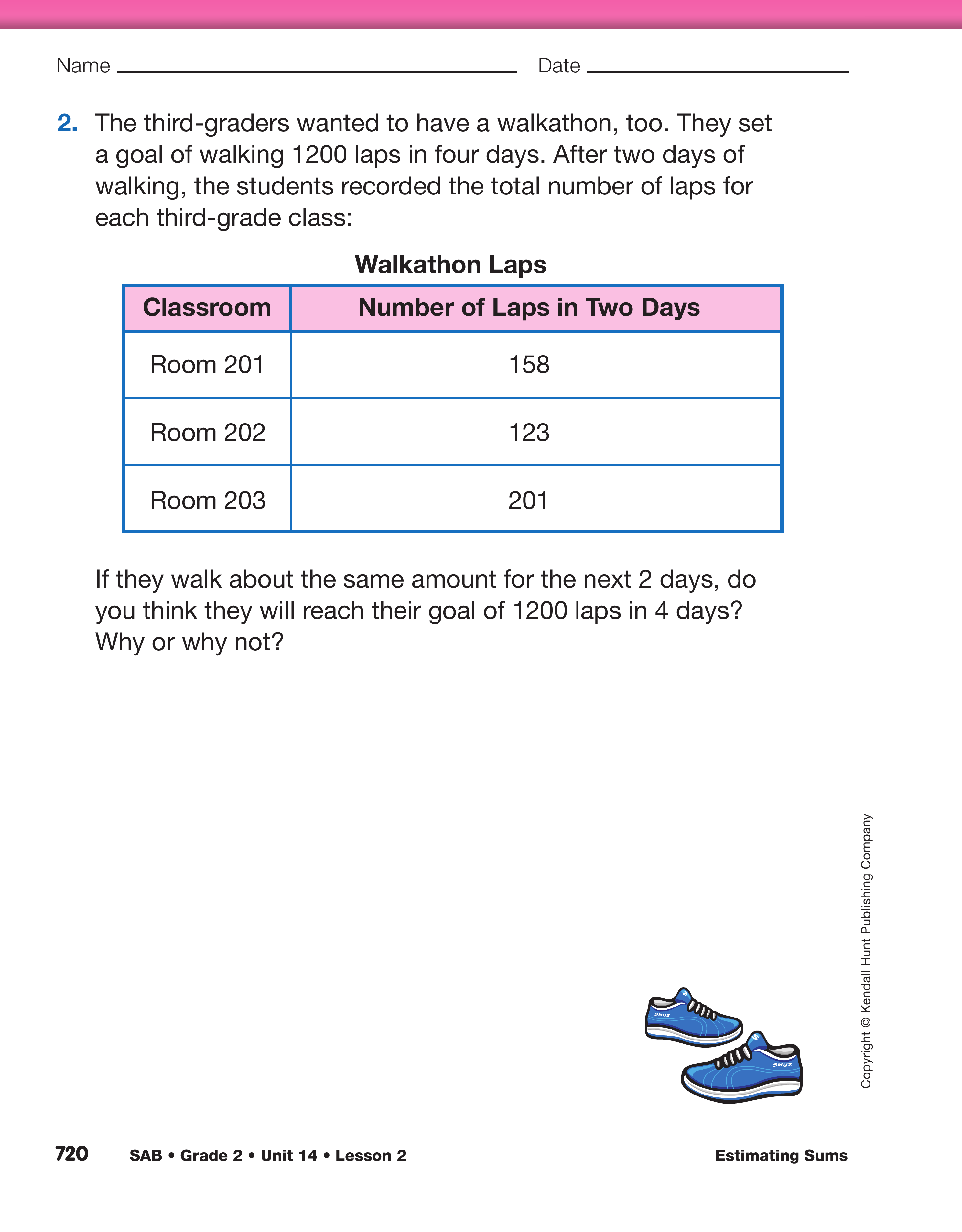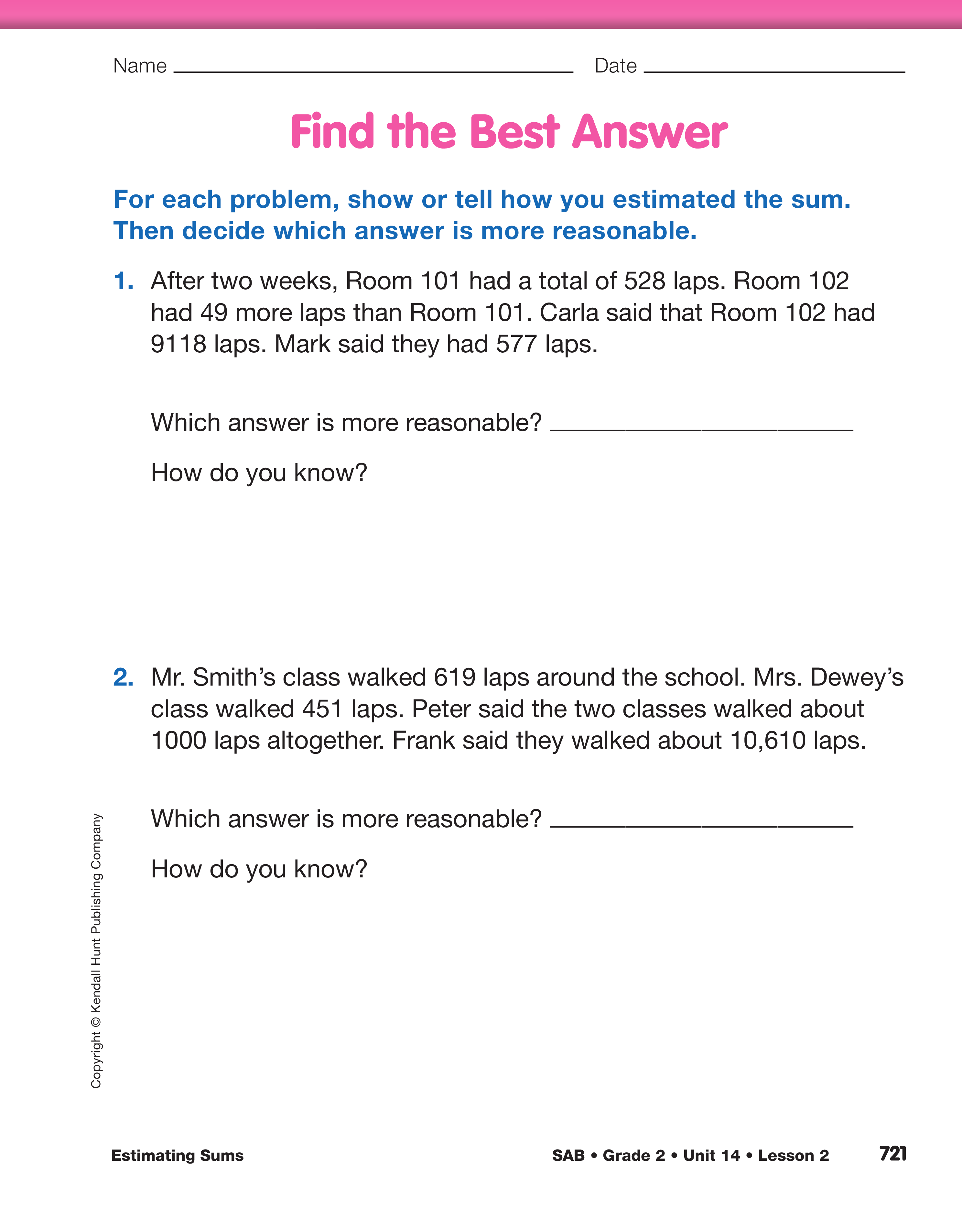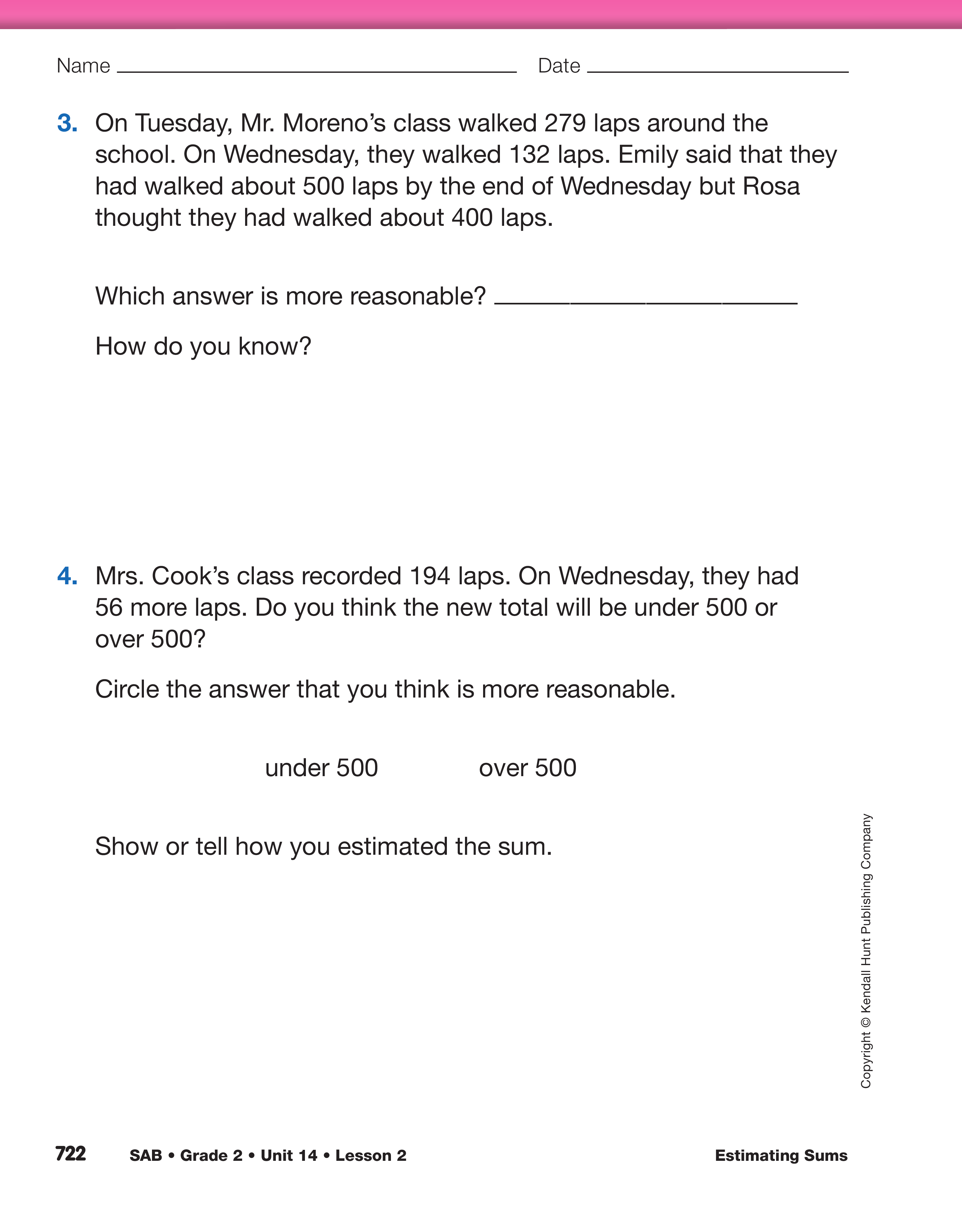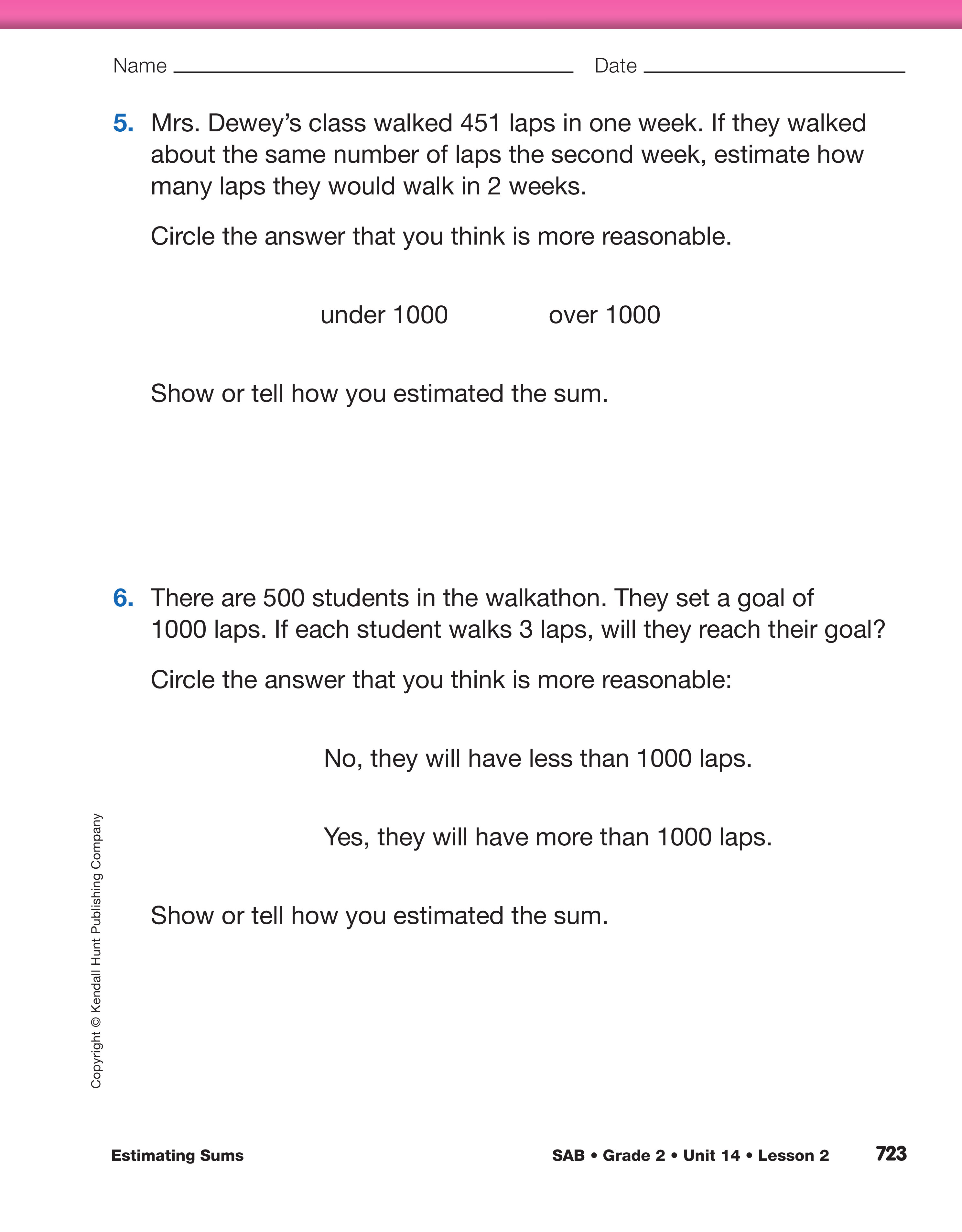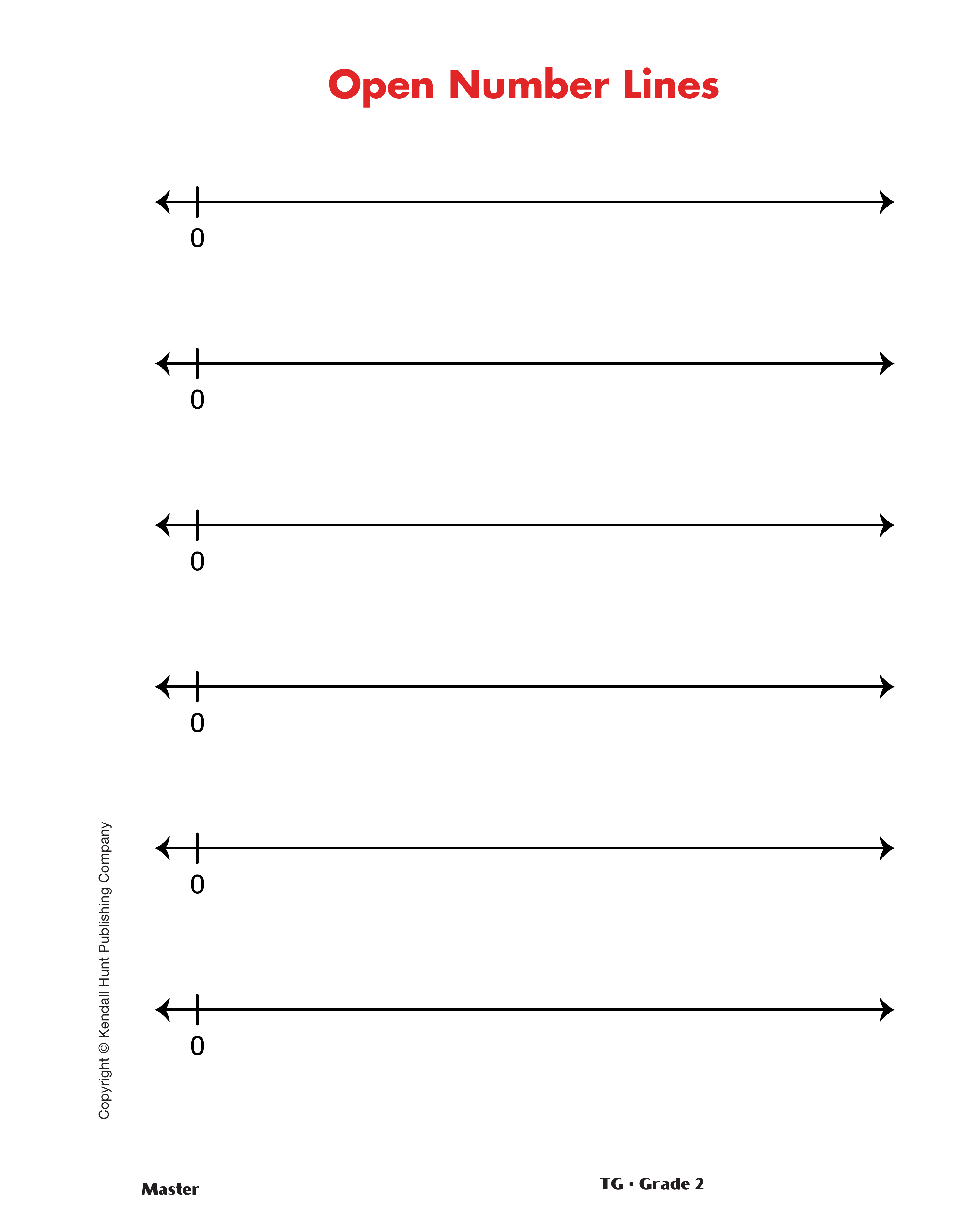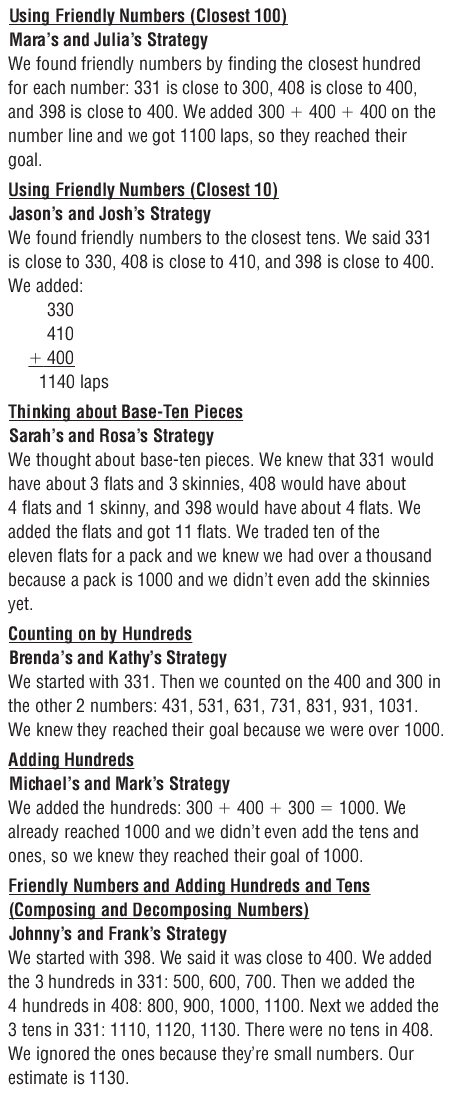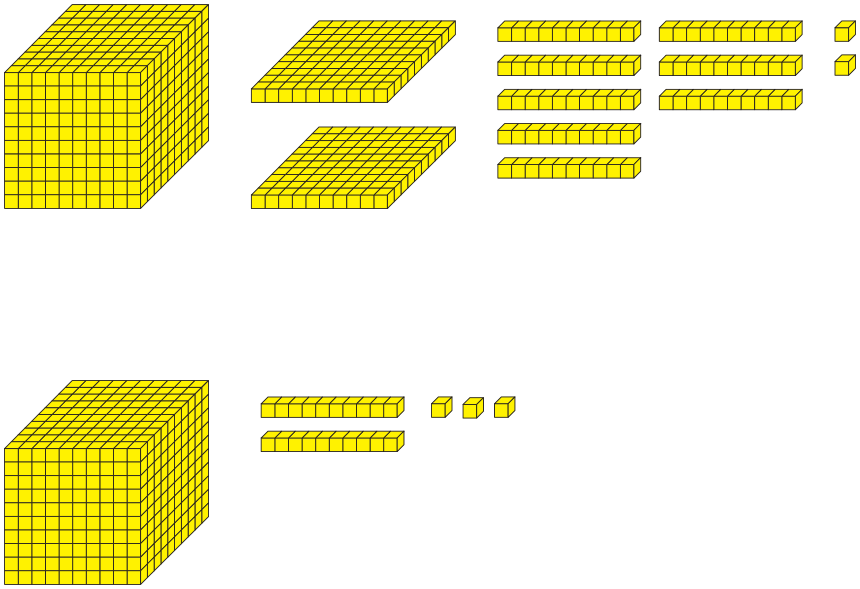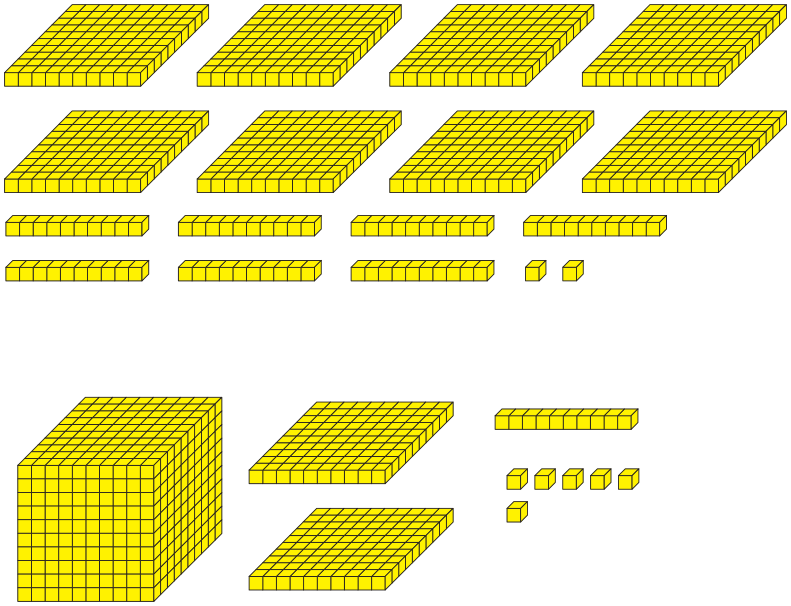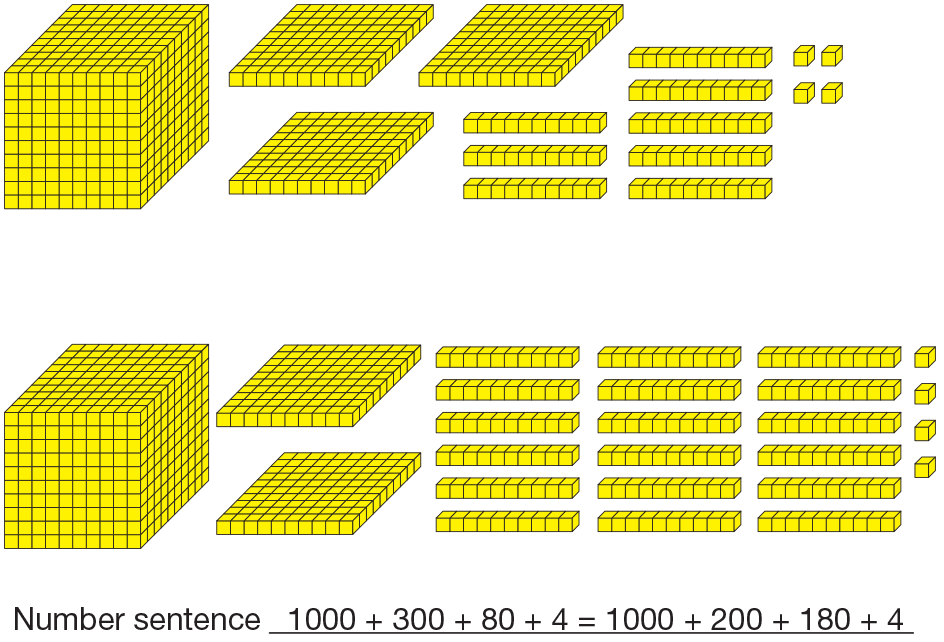Estimating Sums
Est. Class Sessions: 2Developing the Lesson
Part 2: Use Estimation to Determine Reasonableness
Estimate Sums. In Unit 7, students learned that estimation is very helpful in determining if an answer is reasonable. Pose the estimation problem in Question 1 on the Setting Goals pages in the Student Activity Book. Ask student pairs to estimate the answer and be ready to explain the strategies they use. Emphasize that they have to find out if the second grade classes are close to 1000 laps and that they do not have to find the exact answer. Have copies of the Open Number Lines Master and base-ten pieces readily available.
Upon completion, have students share their strategies for solving the problem. Ask students to give names to the strategies they used and add the strategies to the chart. See Figure 1 for possible estimation strategies.
Make a list of strategies students use to solve the problems and add them to the Estimation Strategies for Addition chart. In Figure 1, some of the strategies used were:
- Using Friendly Numbers (Closest 100)
- Using Friendly Numbers (Closest 10)
- Thinking about Base-Ten Pieces
- Counting On by Hundreds and Tens
- Adding Hundreds
- Composing and Decomposing Numbers
Display the second Setting Goals page in the Student Activity Book. Explain that the third-graders thought the second-grade walkathon was such a good idea that they wanted to have their own walkathon. Read the introduction and ask student pairs to use estimation to solve the problem presented on the page. Encourage students to use some of the strategies on the Estimation Strategies for Addition chart and to be ready to explain the estimation strategies they use.
Upon completion, ask students to share their solution strategies.
Ask:
Use Sample Dialog 1 to guide the discussion.
Determine Reasonableness of a Sum. Display the following problem and have student pairs discuss which answer is the most reasonable:
552
+623
Ask:
679
+233
- 8112
- 900
- 1200
See Sample Dialog 2 for possible estimation strategies students may use to determine a reasonable sum.
Have student pairs estimate the sums in Questions 1–6 on the Find the Best Answer pages in the Student Activity Book. Upon completion, have students share their estimation strategies.
















